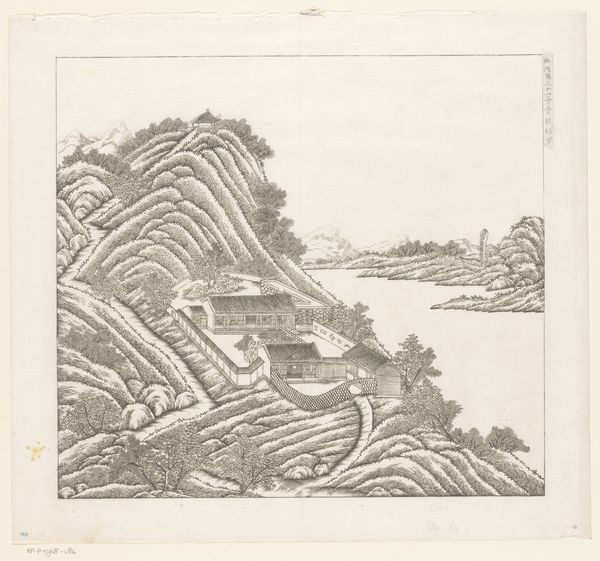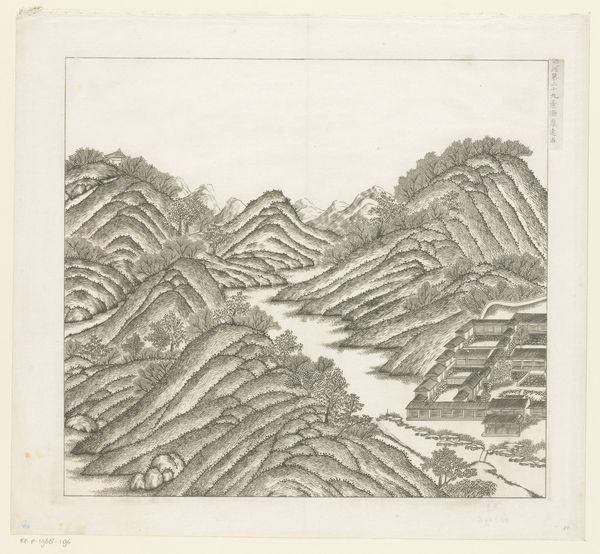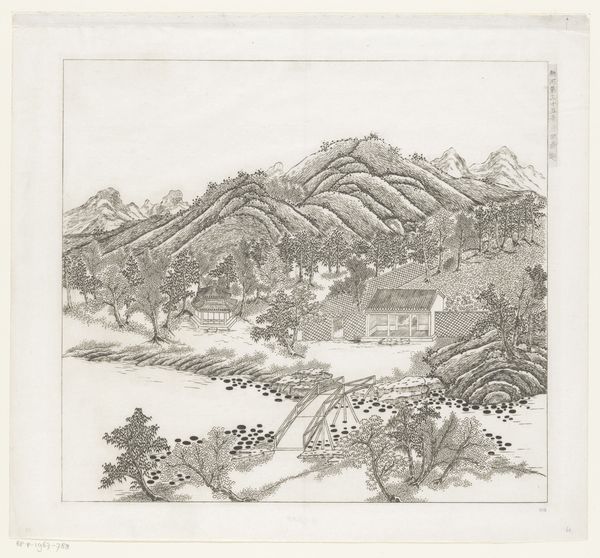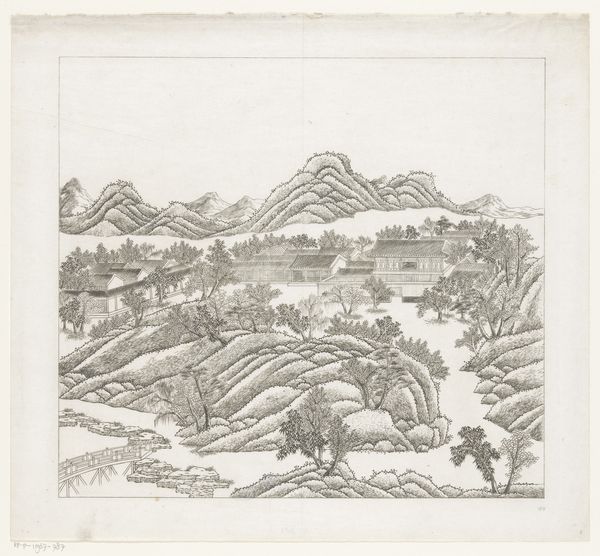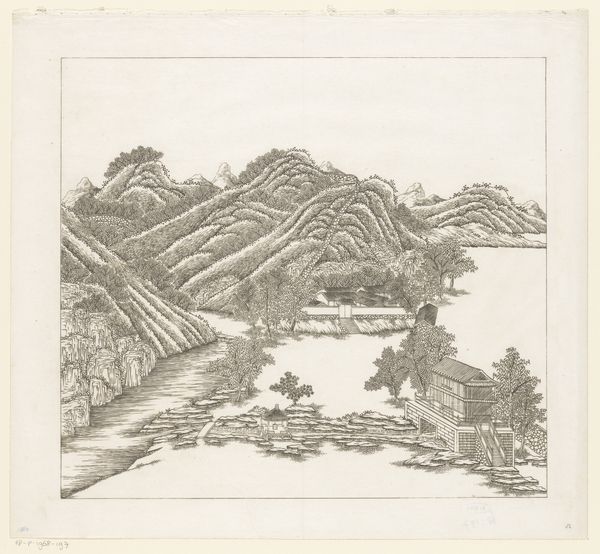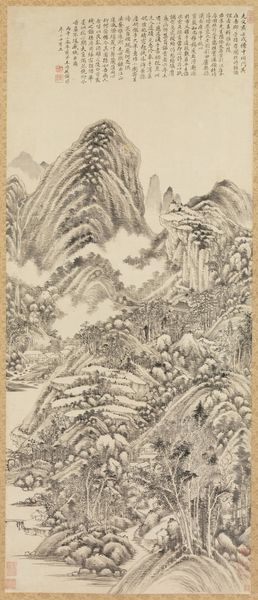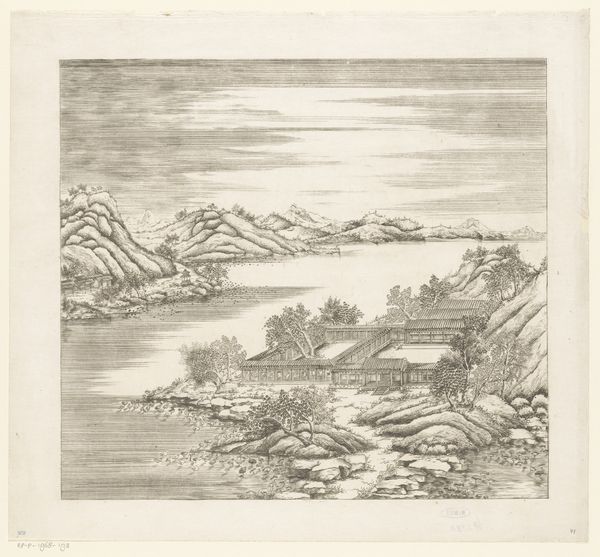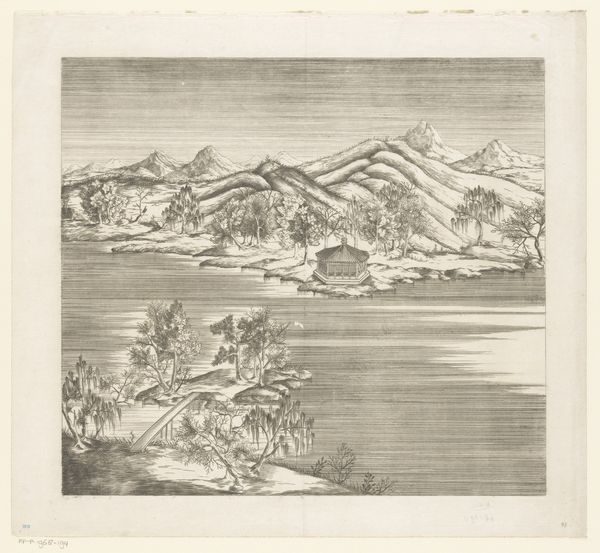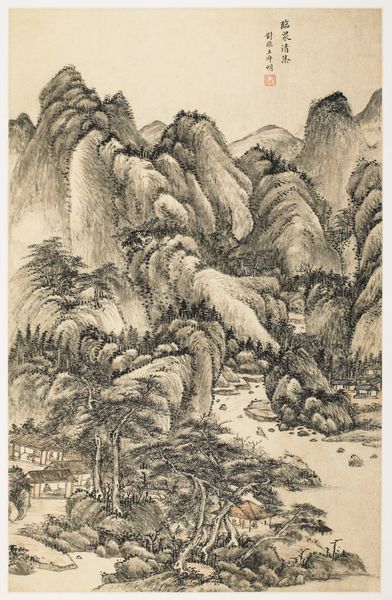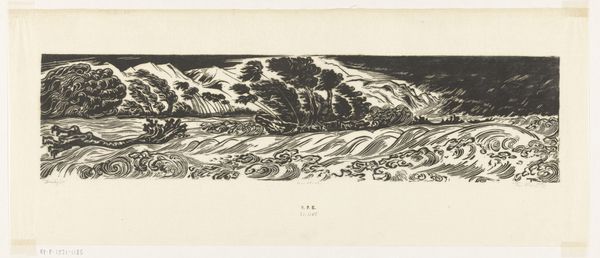
Gezicht op een deel van het keizerlijk zomerpaleis in Chengde (Jehol) te China 1712 - 1714
0:00
0:00
print, engraving
# print
#
asian-art
#
landscape
#
geometric
#
line
#
engraving
Dimensions: height 323 mm, width 356 mm
Copyright: Rijks Museum: Open Domain
Matteo Ripa etched this view of the Imperial Summer Palace in Chengde, China. Winding paths invite the eye to wander, symbolizing life’s journey and the search for enlightenment. Consider the mountain, an enduring motif across cultures. In Chinese art, mountains represent the connection between heaven and earth, a sacred space for spiritual transcendence. These forms echo through time, from the ziggurats of ancient Mesopotamia, built as artificial mountains to reach the gods, to the idealized landscapes of the Renaissance. The placement of the palace atop the mountains, however, connects to other works in which the dominant class uses height as a show of power and to appear closer to the heavens. Think of the pyramids of Giza, or the Tower of Babel. These structures, like the Summer Palace, tap into our collective memory, speaking to our subconscious desires for power and control. This emotional resonance transcends time, engaging us on a primal level. Through the ages, this symbol resurfaces, evolving, reflecting our shifting relationship with nature, power, and the divine.
Comments
No comments
Be the first to comment and join the conversation on the ultimate creative platform.


